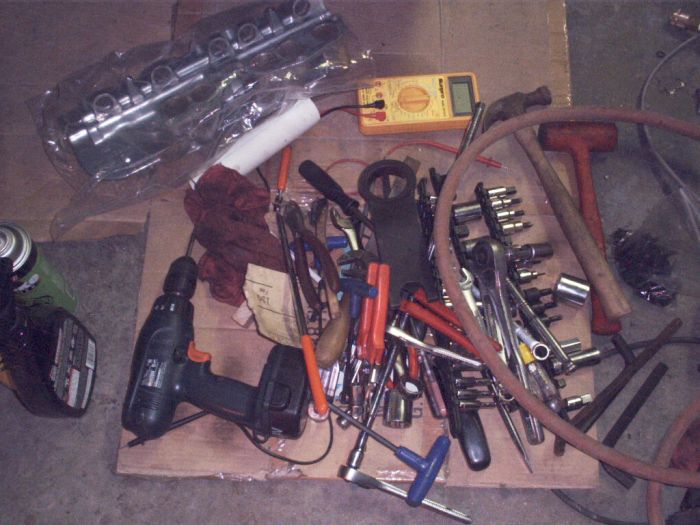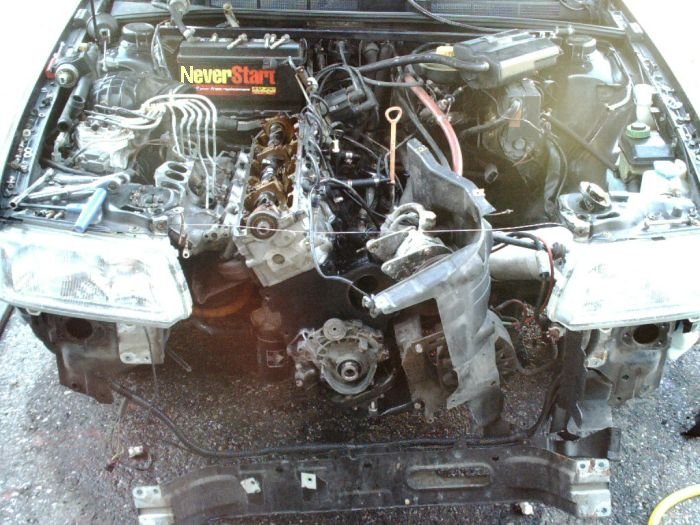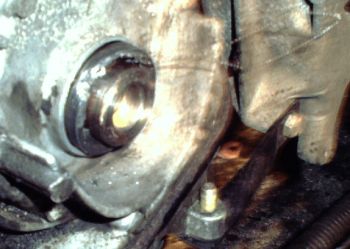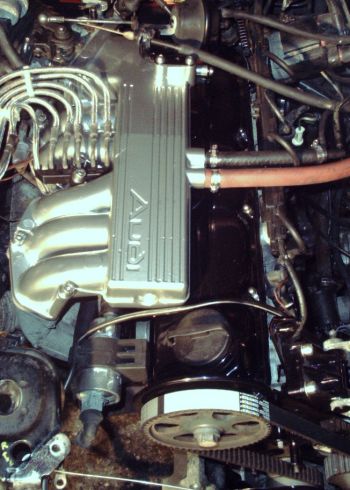 |
90Q Timing Belt & c. |
 |
My 1989 90 Quattro, with mostly unknown service intervals, was going to be due for a preventative timing belt replacement this summer. Along with the belt the usual drill is to also do the water pump, the idler pulley, the crank seal, and the accessory belts.
A couple of weeks ago my plastic and aluminum radiator started weeping a bit around the top and that forced the issue - I might as well bust open the entire cooling system at once and have done with it. I bought a new all metal 4000Q radiator for the car - since I feel no need for the auxiliary radiator I won't need the extra port for it. I live in the frozen north and have ditched the A/C on my car, so the single radiator should be sufficient. A new coolant expansion tank will also make its debut.
I also wanted to replace my cam cover gasket, since like most of them it either leaked a bit or at least looked guilty judging by the accumulated crud on the intake manifold. Since it is a bit easier to get to its fasteners with the timing belt covers off, now was as good a time as any... pulling the cam cover on an NG 2.3 engine also requires removing the top of the intake manifold.
Overall this job created the opportunity to install a large number of nice shiny powder coated parts I had accumulated.
First, assemble the required tools:

Then remove and discard the A/C condenser, radiator, hack off assorted miscellaneous hoses; remove the accessory belts, remove the timing belt covers, harmonic balancer/crank pulley, cam pulley, and water pump; remove the intake manifold with throttle body, and the cam cover. Clean all exposed surfaces:

|
Right, removing the crank seal, by hook or by crook:
Below right, somehow the timing belt and water pump have neatly slipped into place:
Below left, yes, that sure is a pretty intake manifold and cam cover:
|  |
 |
 |
Finally, having covered everything back up, filled it with coolant, and run it for a few seconds, I have a leak free smoothly running engine (these are just show off shots for the pretty parts!):
|